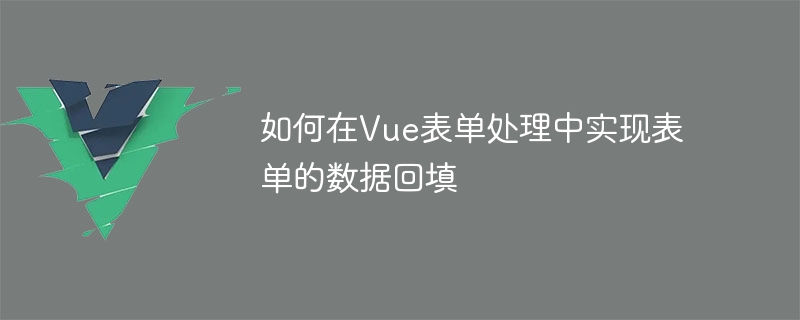

How to implement form data backfilling in Vue form processing
In Vue, form processing is a very common requirement during the development process. Before the user submits the form, we often need to use existing data to backfill so that the user can modify the original data.
Below we will introduce a method of how to implement form data backfilling in Vue form processing, and provide corresponding code examples.
In Vue, you can use the v-model directive to achieve two-way binding of form data and data in the Vue instance. First we need to define a data attribute in the Vue instance to store the form data.
data() { return { form: { name: '', age: '', email: '' } } }
Then use the v-model directive in the template to bind the input items of the form and the data in the Vue instance.
After the Vue instance is created, you can use the created life cycle hook function to perform data backfilling.
created() { // 模拟从接口获取数据 axios.get('/api/user') .then((response) => { this.form = response.data; }) .catch((error) => { console.log(error); }); }
In the above code, we use the axios library to simulate obtaining data from the interface, and assign the returned data to the form attribute to achieve backfilling of form data.
The above is a simple Vue example, which realizes the binding of the form and Vue instance data through the v-model instruction, and uses the created life Periodic hook function performs data backfilling. Through this method, we can easily backfill the form data and improve the user experience.
I hope this article can help you implement form data backfilling in Vue form processing.
The above is the detailed content of How to implement form data backfill in Vue form processing. For more information, please follow other related articles on the PHP Chinese website!




